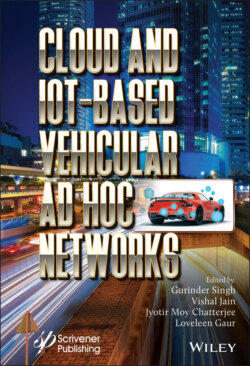Читать книгу Cloud and IoT-Based Vehicular Ad Hoc Networks - Группа авторов - Страница 64
3.5.1 V2V Communication Access Technologies
ОглавлениеNumerous sensors and electronic frameworks are being equipped in modern vehicles. The various sensors and devices introduced inside the vehicle are conveyed by a few conventions and systems. The principles get to advances for Inter-Vehicle and Vehicle-to-Infrastructure Communications are as per the following:
1. IEEE 802.11 WAVE Standard
A device is agreeable to the IEEE 1609 guidelines and IEEE Std 802.11 that supporting the data trade with other WAVE devices. It gives interoperable, productive, and dependable radio interchanges on the side of utilizations offering security and accommodation. In numerous instances of ITS application situations, the WAVE framework is intended to furnish vehicles with the immediate network to different vehicles (V2V), to side of the road (V2R), or foundations (V2I) through committed short-extend correspondences (DSRC) [8–13, 35]. Regularly these standards work when fixed, which is introduced in side of the road posts, traffic signals, and street signs. It receives orthogonal frequency division multiplexing (OFDM) and accomplishes a correspondence scope of roughly 1,000 ft [14–17].
2. V2V Communication Utilizes J2735 Standard
A framework intended to transmit essential security data between vehicles to urge alarms to drivers concerning approaching accidents. Vehicle-inhabitant crash shirking advancements can be profoundly useful. It uses onboard short-extend radio correspondence [18, 27] devices to communicate messages like vehicle speed, heading, brake status, and view capacities that surpass current and close term vehicle-occupant frameworks. The longer recognition capability of J2735 is used to warn the drivers much earlier than that of Sensors, Camera and Radar can.
3. Access Technologies for V2I Communications
The Vehicle to Infrastructure interaction is similar to V2V wireless [19–22] communication technologies. V2I communications apply to all vehicles on the road and transform into smart infrastructure. Algorithms [23–26] are used for data exchanging of data among vehicles and framework components. It performs counts that are perceived as high-hazard circumstances ahead of time, bringing about driver cautions and admonitions through explicit activities.
V2I system has following components:
Vehicle On-Board Unit or Equipment (OBU or OBE)
Roadside Unit or Equipment (RSU or RSE)
Safe Communication Channel
V2I system Wireless Technologies
1 DSRC Bluetooth
2 Wi-Fi
3 Mobile networks
4 Short-range radio
Applications
1 Safety
2 Efficiency
3 Payment and information, etc.
